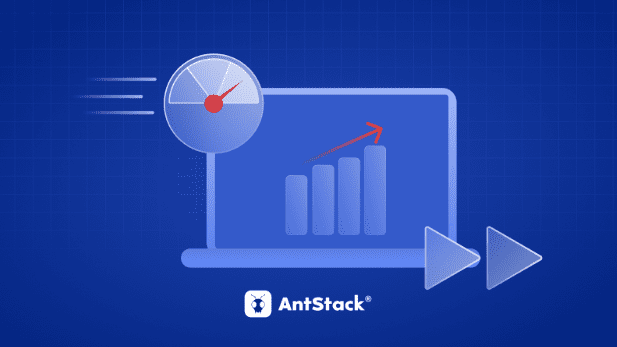In the competitive age, it is important to develop products of premium quality to beat the competition and stand ahead in the crowd. Agile models replace traditional approaches with different sequential stages while focusing on scaling and flexibility. Continuous Integration and Continuous Delivery refers to trending practices in the software development sector. Depending on different faster and shorter iterations, CI/CD reduces the risks of errors. It facilitates building, thereby boosting productivity.
What is CI/CD?
In the latest software development, it is important to achieve speed and efficiency to develop apps of premium quality. This is where the importance of the CI/CD pipeline comes in. CI/CD, viz., continuous integration and continuous delivery, automates and streamlines the software development process.
CI/CD is regarded as a set of different automated processes that provide developers with the ideal opportunity to create, test, and deploy software efficiently. The CI/CD pipeline is based on continuous integration, continuous delivery, and continuous deployment principles.
Continuous integration is considered to be the initial step of the CI/CD pipeline. It includes integrating different code changes from several developers within the central repository. This process removes the challenges of different conflicting changes, thereby assuring that the codebase remains updated. By merging the code regularly, the developers can recognize and fix earlier problems. Thus, it helps prevent technical debt accumulation.
Continuous Delivery assures that the software remains updated within the deployable state. As the code changes pass through different automated tests, the specific software remains updated for development. Continuous Delivery assures that the software remains updated consistently, and thus, the users can deploy it at a specific time.
Continuous Deployment is the last step of the CI/CD pipeline. Such a stage involves the deployment of the software creation and software testing to different production environments. With the automation of the specific deployment process, the software developer removes manual errors. Thus, it assures a seamless and faster rollout of different features. Continuous Deployment decreases the time between deployment and development, thereby facilitating more rapid responses and quicker innovation to the potential user feedback.
Benefits of choosing CI/CD pipeline
CI/CD pipeline happens to be the real game changer in the software development sector. With the combination of automated testing, continuous delivery, continuous integration, and continuous deployment, the potential developers will streamline such processes. It boosts collaboration, and thus, it helps to develop supreme-quality software. Adopting the CI/CD pipeline is the primary step to getting a responsible and more agile software development environment.
There are benefits of choosing a CI/CD pipeline for the software development process:
Boosting software quality
The CI/CD pipeline is a suitable choice for fixing different issues during the earlier stages of the software development cycle. Moreover, it helps improve software security and quality. You can use other code analysis tools and automated testing to ensure that the code will meet the best practices and standards of the business enterprise.
More reliable and quicker software releases
The CI/CD pipeline plays an integral role in streamlining and automating the software delivery pipeline process. It helps decrease bottlenecks, manual errors, and delays. You will release the software with reduced downtime, thus improving customer retention and satisfaction.
Better communication and effective collaboration
Choosing the CI/CD pipeline has become the cornerstone of continuous development as it helps integrate the culture of communication and collaboration between the operations team and different stakeholders. Besides this, you can make the right use of other tools, such as code review, version control, chat platforms, and reviews to discuss and share code problems, code feedback, and code changes. You can make the right use of dashboards and metrics to measure and track the software impact and software performance.
Enhancing the speed of the software development process
Time is the essence of the software development process. To beat fierce competition and accomplish client demands, software developers constantly try to improve the workflow while maintaining quality. The CI/CD pipeline is notable in this aspect as it empowers teams to boost the software development lifecycle speed.
CI, or Continuous Integration, is the focus of the pipeline. It provides the optimum choice for the software teams to incorporate the code changes seamlessly within the central repository. With the automation of integrating the coding process, the developers will find the earlier problems through effective collaboration.
With the integration of every code change, the CI/CD pipeline assures a smoother software development process. Moreover, it facilitates quicker feedback loops. In addition, it provides a suitable opportunity for the developers to rectify the ongoing problems faster, thereby optimizing the workflow in real-time.
Quality acts as the bedrock for successful software development. In a fast-paced, dynamic environment, maintaining supreme quality during the development process can be challenging. Implementation of the CI/CD pipeline is worth mentioning in this aspect as it creates a set of different mechanisms, thereby assuring the software quality.
Continuous Testing is an indispensable part of the CI/CD pipeline. It provides the optimum opportunity for the developers to test the code changes automatically at various stages of the software development process. Such an iterative and comprehensive approach allows the software team to identify and rectify different problems during the earlier phases. Moreover, it decreases the risks of vulnerabilities and bugs through various cracks.
The CI/CD pipeline is a powerful means of improving the software development process. Moreover, it offers value to potential customers and users more reliably and quickly. With the adoption of the CI/CD pipeline, it is possible to improve the efficiency, security, and quality of the software development process.

